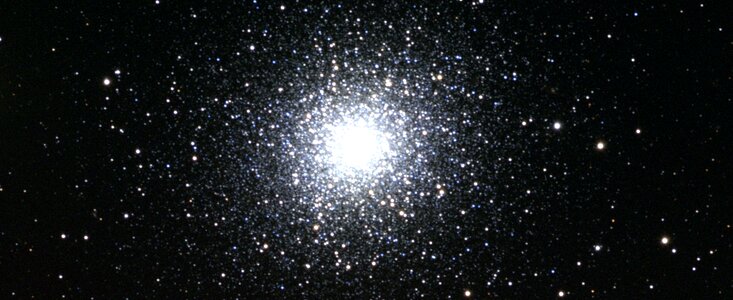Unusual Mixing in Red Giants Identified as Unexpected Contributor to Mysterious Source of Lithium
9 January 2001
Astronomers surveying hundreds of red giant stars in more than a dozen globular star clusters have found clues that may reveal an unexpected origin of lithium, the third element in the Periodic Table.
The team used the 3.5-meter WIYN Observatory at Kitt Peak National Observatory and an optical-fiber spectrograph capable of observing dozens of red giants simultaneously to identify a handful of red giants with surprisingly high lithium abundances.
"Our results suggest that fresh lithium has been produced within the stars themselves, perhaps via radioactive decay of the unstable isotope beryllium-7, which is brought to the star's surface via an unusual mixing process," explains lead author Catherine Pilachowski of the National Optical Astronomy Observatory, Tucson, AZ.
At least 10 percent of the lithium in the Milky Way galaxy today was created in the Big Bang, but the origin of the remaining 90 percent is a major mystery. Astronomers have long suspected that the element is produced in stars, but the exact type of star that makes lithium was not known.
Red giants that contain lithium are rare - only about a dozen red giants of the 700 surveyed contained detectable amounts. Most stars destroy lithium during an early hydrogen-burning phase of their evolution. When a star's supply of hydrogen is exhausted, the star expands to become a red giant. The upper layers of the star bloat and begin to roil like a boiling pot of water. Any remaining lithium in the star's outer layers is mixed with its deeper, lithium-depleted layers, and is quickly burned at the high temperatures found deep inside the star.
The lithium detected in this study appears in red giants that are very bright, reaching more than 500 times the luminosity and 30 times the radius of the Sun, although their masses are slightly less than the Sun's. Such stars are almost ready to ignite helium in the phase known as the core-helium flash.
The appearance of lithium in these evolving red giants suggests that the lithium is produced in the star and brought to the surface by a sudden episode of mixing. While lithium itself is destroyed inside stars, the unstable isotope beryllium-7, which decays radioactively to lithium-7, can be produced in stars.
If the beryllium-7 is brought to the surface quickly enough, then the lithium-7 will appear briefly on the surface as the beryllium-7 decays, via a transport mechanism suggested by Cameron and Fowler in 1971. The cause of sudden mixing episode is not known, but may be related to the interaction of the expanding stellar envelope and the residual rotation of the interior of the star (as suggested by Marc Pinsonneault of Ohio State University.)
Because the stars are members of star clusters, their masses and evolutionary phases can be determined. About six percent of the brightest cluster giants contain lithium.
"Lithium is also found in other red giants of larger mass beyond these cluster giants, and it can be produced at a later stage of stellar evolution as well," Pilachowski notes. "It may be that the Galaxy's lithium cannot be attributed to a single origin, but rather is produced in several different environments, each contributing partially to the lithium content of the Milky Way."
Co-authors of the paper presented today in San Diego at the 197th meeting of the American Astronomical Society include Christopher Sneden (University of Texas at Austin), R. P. Kraft (University of California at Santa Cruz), Constantine Deliyannis (Indiana University), and Dianne Harmer (NOAO).
More information
The WIYN Observatory is located at Kitt Peak National Observatory outside Tucson, AZ. Kitt Peak is part of the National Optical Astronomy Observatory, which is operated for the National Science Foundation by the Association of Universities for Research in Astronomy (AURA), Inc.
Contacts
Douglas Isbell
Public Information OfficerNational Optical Astronomy Observatory
Tel: 520/318-8214
Email: disbell@noao.edu



